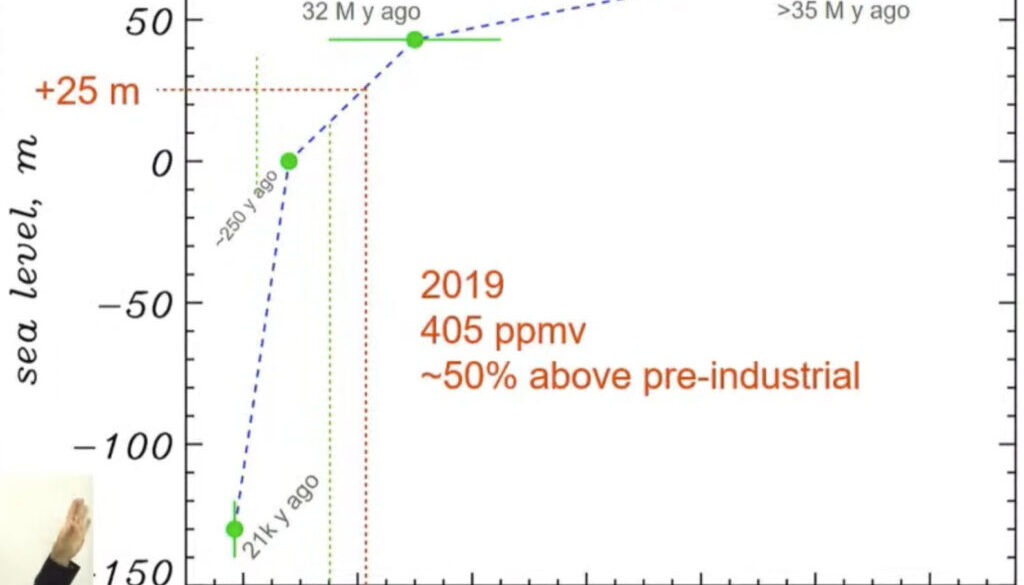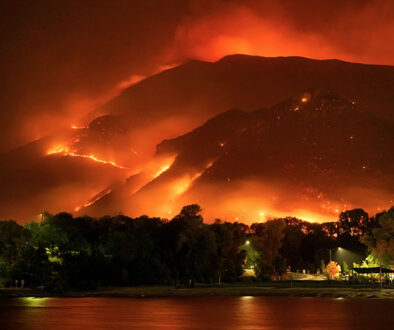Financial institutions vastly underestimate risk from sea level rise
The latest State of the Cryosphere pulls no punches, so it’s worth reproducing the Forward here. Meanwhile, the Reserve Bank is vastly underestimating the residential mortgage exposure to flooding risks:
“We asked banks to identify the value of their mortgage exposures that would be affected by permanent sea level rises of 20 centimetres, 50 centimetres and 1 metre in the most severe case. This range of sea level rise is consistent with climate change modelling out from 2040 to 2100.”
A sea level rise of just 1 metre (the banks’ ‘most severe case’) by 2100 is entirely inconsistent with real world events now unfolding. COP27 was an abysmal failure. Emissions are increasing instead of decreasing. Greenland is decanting into the ocean, along with most of our mountain glaciers, and even parts of the East Antarctic Ice Sheet, which was assumed to be stable for thousands of years, are showing signs of destablising (Video 2), while…
‘Sections of the West Antarctic Ice Sheet may collapse even without further emissions, causing more than 4 meters of additional sea-level rise…’ – State of the Cryosphere 2022 (p8)
State of the Cryosphere Forward
Pam Pearson Director, ICCI
Far too much human suffering occurred in 2022 due to rapid loss of ice in the cryosphere, Earth’s snow and ice regions, from human-caused global warming.
Most occurred in places far from ice and snow: coastal sea-level rise from ice sheet loss; water shortages well downstream from shrinking glaciers and snowpack; floods, avalanches, wildfires and extreme weather events.
All were caused in whole or in part by loss of the cryosphere’s stabilizing influence on the global climate system. Our global ice stores are receding at rates unthinkable just a decade ago, whether held in ice sheets, land glaciers, permafrost or sea ice.
This State of the Cryosphere Report 2022: Growing Losses, Global Impacts especially raises up the IPCC Sixth Assessment conclusion that complete loss of Arctic sea ice in summer is now inevitable, even with the very lowest emissions pathways that peak temperatures at 1.6°C. This finding is a terminal diagnosis for that ecosystem and its essential role reflecting sunlight as the “Earth’s refrigerator,” something sea ice scientists have been warning for decades would come with continued high emissions. No one seems to have listened.
But the impending loss of Arctic summer sea ice it is not the only sign of growing cryosphere collapse. This year also saw March rains on East Antarctica, with temperatures 40°C above normal; a spike in Greenland surface melt for the first time ever in September; loss of over 5% of glacier ice in the Alps over a single summer; and the first documented rise in methane release due to global warming from a permafrost monitoring site. It also saw greater shell damage in parts of the Arctic Ocean, a clear sign of acidification; and an apparent crash in snow crab populations likely tied to warming waters.
Research published this year also shows growing convergence between ice sheet models and what paleo-climatologists (those who study Earth history going back millions of years) have warned for decades: that ice loss and irreversible sea-level rise may be occurring faster, and at lower temperatures than previously forecast: even from the massive East Antarctic Ice Sheet, with temperatures above 1.8°C. Nearly all these impacts are irreversible on human timescales. It might take only decades to melt a glacier, but centuries to thousands of years of lower temperatures to grow it back.
The message from the global cryosphere in 2022 is that we are already well into the risk zone for irreversible damage from continued loss of the planet’s global ice stores. Nevertheless, the 2022 UNFCCC Synthesis Report on reported pledges (NDCs) showed not the 45% decrease in emissions needed by 2030 to keep 1.5°C within reach, but a 10% increase by 2030.
Our planet’s melting ice pays no attention to climate pledges and NDCs. It responds only to the level of CO2 and warming in the atmosphere. In 2022, the year-on-year increase of about 2.5 ppm continued unabated, as it has for the past two decades. Until this CO2 rise slows, halts and begins to decrease, the ice will continue to respond as it always has: to the only number that really matters.




